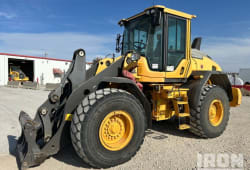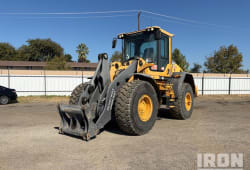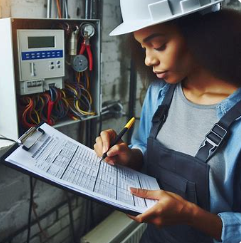Quick Bulldozer Inspection Tips
6 Min read
)
November 5, 2022
Buying a new bulldozer for your construction business is an investment that you shouldn't take lightly. One of the most economical options is to purchase a used bulldozer that has been well-maintained by its previous owner. While it may be tempting to buy the bulldozer with the lowest price tag, it's important to consider its safety and other factors.\ Equipment with a below-average price will likely need costly repairs that could lead to excessive downtime and repairs that exceed your budget. To make the most of your used bulldozer purchase, you'll want to do a thorough inspection before handing over your payment. Here are some quick bulldozer inspection tips to help you get the value.
Research Your Options
Once you've decided what type of bulldozer you'd like to add to your fleet and how much money you have allocated for the purchase, you're ready to search for local sellers online. Sites like Boom & Bucket are ideal for finding reputable sellers. They neatly organize the price, specifications, and other important details of each machine. On Boom & Bucket, you can assess the quality of each bulldozer and easily determine the machines' pros and cons before ever seeing the equipment in person. This ensures you go into your inspection as an informed buyer with as much information as possible.
Visual Inspection
Once you've compiled a list of prospective bulldozers, it's time to see the equipment in person to do a visual inspection. This is a key and essential step in the process to make sure that the machine is in good condition and doesn't have any unexpected flaws that could cost you in the future. During this inspection, you'll check for excessive wear and tear or damage across the entire bulldozer, including inside the cab. Let's review some of the most important places to check and why doing so may prevent you from making a bad purchase.
Excessive Wear & Tear
The first thing you'll want to check for on a used bulldozer is signs of excessive wear and tear. This could indicate that the machine was used incorrectly or it wasn't taken care of by the previous owner. The most common areas of excessive wear include the cutting edge, the spill guard, and the top of the blade. During your inspection, be sure to also check the trunnion pins and caps, as a loose trunnion cap is a telltale sign of excessive wear.
The Undercarriage
The undercarriage of a bulldozer will give you great insight into how the machine was used and cared for by prior owners. Signs of damage or dents on the undercarriage could be a red flag that the bulldozer was not used as intended. It could also indicate that there may be more damage beneath the surface.
Bulldozers are designed to withstand rocky and treacherous terrain. The undercarriage should be made of heavy-duty materials that can hold up well in rough environments. Talk to the seller about the type of undercarriage material the bulldozer has, and how the equipment was used in the past. This will help you evaluate the undercarriage's overall condition and determine whether you should expect to pay thousands of dollars to replace it in the near future.
After all, most buyers choose used equipment to save money, so the last thing you'll want to do is purchase a money pit just because it has a low asking price. Costly repairs and replacements of components can eat away at your budget. Starting your inspection with the undercarriage will give you a good idea of the quality of the machine before you inspect other elements.
Plate Lines or Welding
During your inspection, check the bulldozer's blade for plate lines. This could indicate that the blade was resurfaced to mask excessive wear. While looking at the blade, note any signs of welding, which could signify that the machine or blades underwent a repair at some point. If you notice any plate lines or welding, bring it up to the seller to find out what you might need to know about the bulldozer's maintenance history.
Hours Logged
While inspecting a used bulldozer, speak with the seller about the hours logged and maintenance done on the equipment so far. You'll want to select a bulldozer with about 5,000 hours logged to get the best value. You'll also want to make sure it was maintained and used correctly throughout its lifespan.
Hydraulic System & Engine
You'll want to make sure that the hydraulic cylinders aren't showing any signs of damage or leaks, such as scratches or dents. Be sure to also check the engine for loose belts, dirty filters, and leaks. Purchasing a used bulldozer can seem daunting, which is why Boom & Bucket created a user-friendly platform to help take the guesswork out of buying used heavy equipment.
Heavy Equipment Role
Heavy equipment, particularly crawler tractors, plays a pivotal role in construction and earthmoving projects. However, these robust machines, equipped with various blades like the angle and straight blade, are not immune to wear and tear. Costly repairs can become inevitable if not properly maintained, affecting optimal performance.
Longevity and Efficiency
To ensure a crawler tractor's longevity and efficiency, adherence to the manufacturer's manual is paramount. Regular checks, especially on the engine oil, are essential. Operating the dozer blade at the correct angles, for both the angle and straight blade, prevents unnecessary strain on the equipment. Pushing material efficiently involves understanding the optimal performance capabilities of the heavy equipment, preventing undue stress and avoiding costly repairs.
Engaging in preventative maintenance as outlined in the manufacturer's manual reduces the frequency of repairs, ultimately keeping costs down. For optimal performance, operators must strike a balance between the workload and the machine's capabilities. In summary, a well-maintained crawler tractor, following manufacturer guidelines, equipped with the right blades, and operated with care, ensure longevity and optimal performance while minimizing the risk of costly repairs.
Here's a table summarizing quick bulldozer inspection tips:
:format(webp)) These inspection tips cover various aspects of the bulldozer, from its physical condition to its maintenance history and operational efficiency. Following these guidelines can help buyers make informed decisions and avoid purchasing bulldozers that may require costly repairs or replacements in the future.
These inspection tips cover various aspects of the bulldozer, from its physical condition to its maintenance history and operational efficiency. Following these guidelines can help buyers make informed decisions and avoid purchasing bulldozers that may require costly repairs or replacements in the future.














